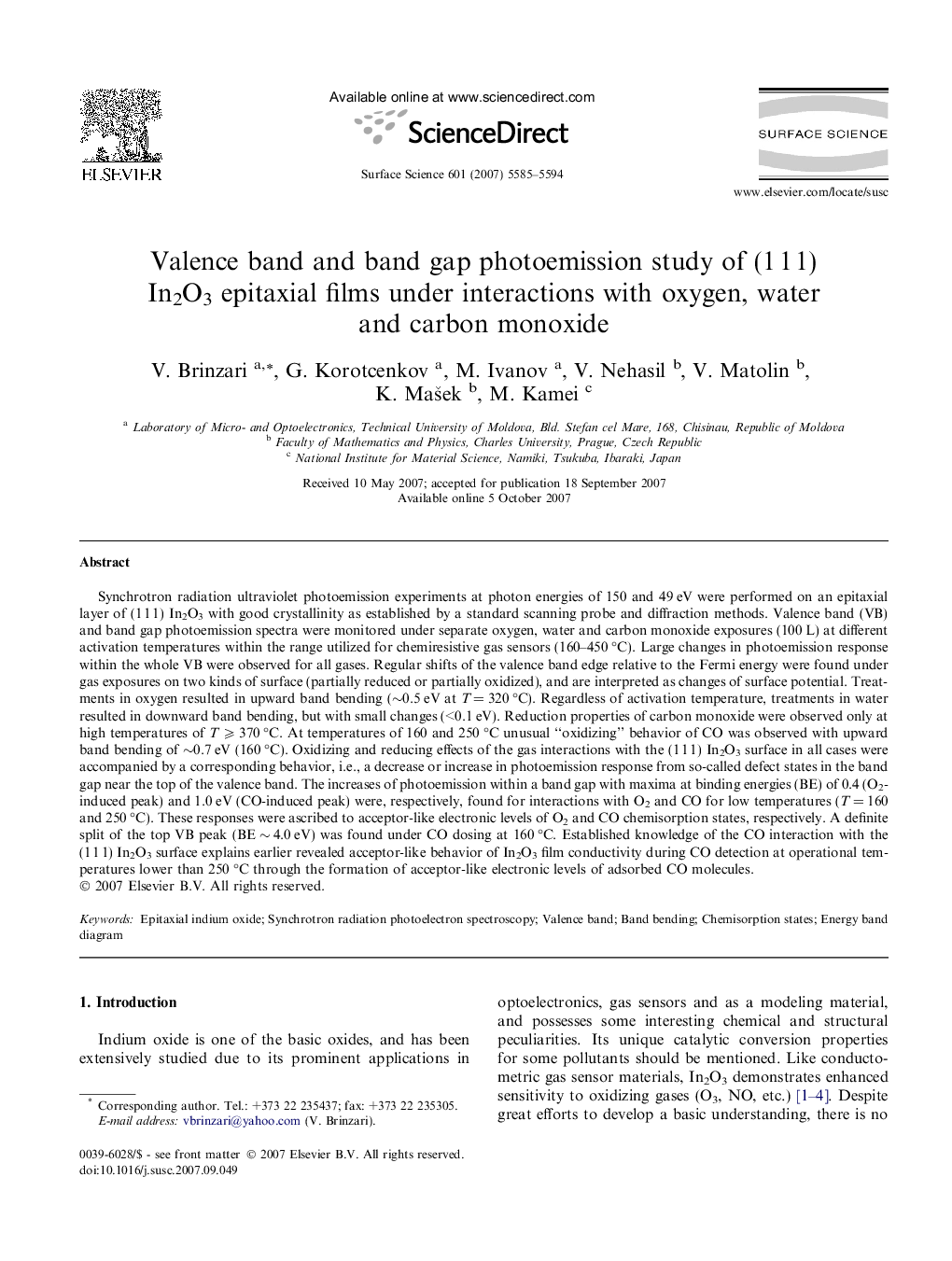| کد مقاله | کد نشریه | سال انتشار | مقاله انگلیسی | نسخه تمام متن |
|---|---|---|---|---|
| 5426328 | 1395886 | 2007 | 10 صفحه PDF | دانلود رایگان |

Synchrotron radiation ultraviolet photoemission experiments at photon energies of 150 and 49 eV were performed on an epitaxial layer of (1 1 1) In2O3 with good crystallinity as established by a standard scanning probe and diffraction methods. Valence band (VB) and band gap photoemission spectra were monitored under separate oxygen, water and carbon monoxide exposures (100 L) at different activation temperatures within the range utilized for chemiresistive gas sensors (160-450 °C). Large changes in photoemission response within the whole VB were observed for all gases. Regular shifts of the valence band edge relative to the Fermi energy were found under gas exposures on two kinds of surface (partially reduced or partially oxidized), and are interpreted as changes of surface potential. Treatments in oxygen resulted in upward band bending (â¼0.5 eV at T = 320 °C). Regardless of activation temperature, treatments in water resulted in downward band bending, but with small changes (<0.1 eV). Reduction properties of carbon monoxide were observed only at high temperatures of T ⩾ 370 °C. At temperatures of 160 and 250 °C unusual “oxidizing” behavior of CO was observed with upward band bending of â¼0.7 eV (160 °C). Oxidizing and reducing effects of the gas interactions with the (1 1 1) In2O3 surface in all cases were accompanied by a corresponding behavior, i.e., a decrease or increase in photoemission response from so-called defect states in the band gap near the top of the valence band. The increases of photoemission within a band gap with maxima at binding energies (BE) of 0.4 (O2-induced peak) and 1.0 eV (CO-induced peak) were, respectively, found for interactions with O2 and CO for low temperatures (T = 160 and 250 °C). These responses were ascribed to acceptor-like electronic levels of O2 and CO chemisorption states, respectively. A definite split of the top VB peak (BE â¼Â 4.0 eV) was found under CO dosing at 160 °C. Established knowledge of the CO interaction with the (1 1 1) In2O3 surface explains earlier revealed acceptor-like behavior of In2O3 film conductivity during CO detection at operational temperatures lower than 250 °C through the formation of acceptor-like electronic levels of adsorbed CO molecules.
Journal: Surface Science - Volume 601, Issue 23, 1 December 2007, Pages 5585-5594